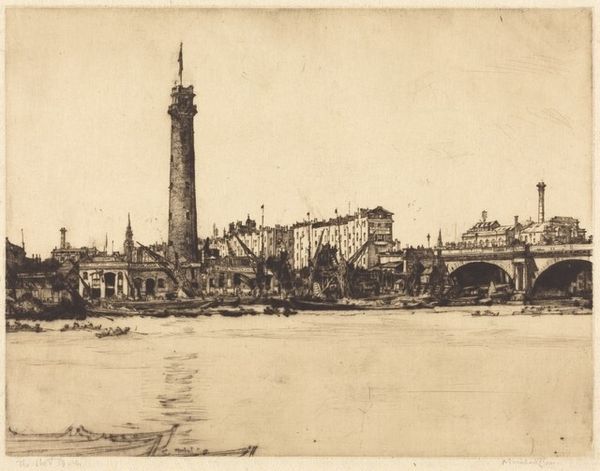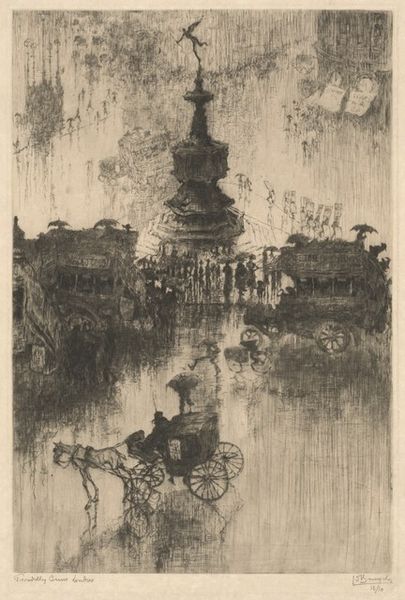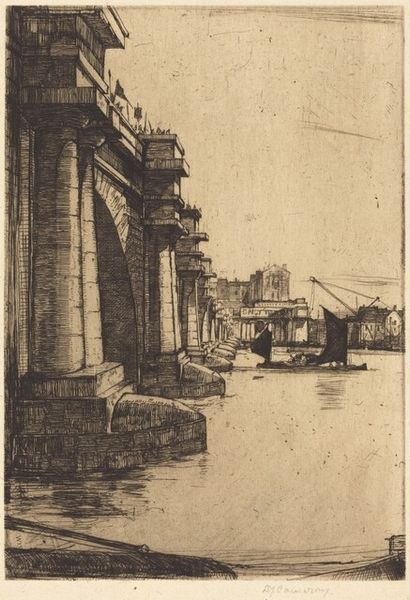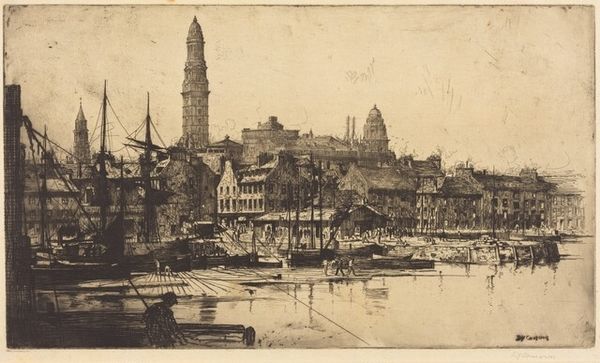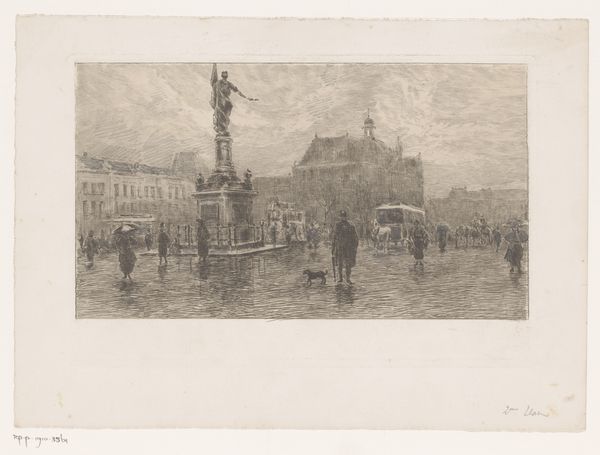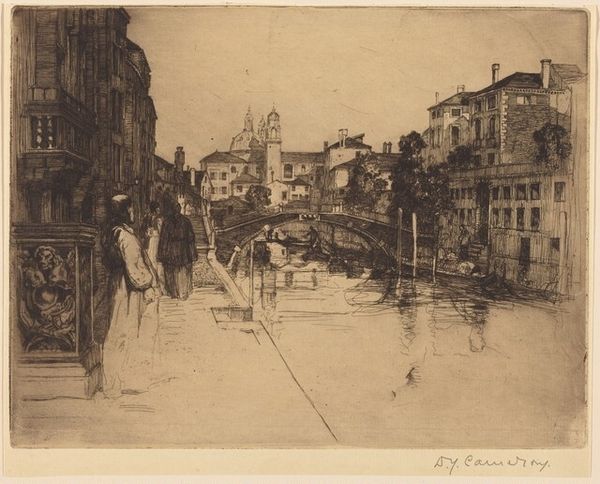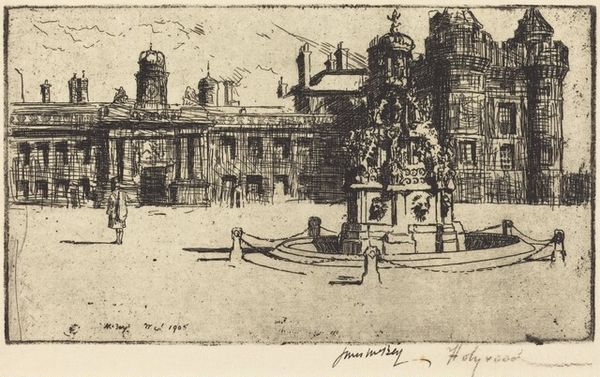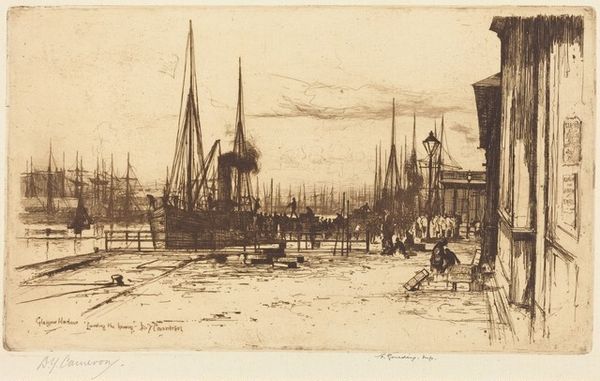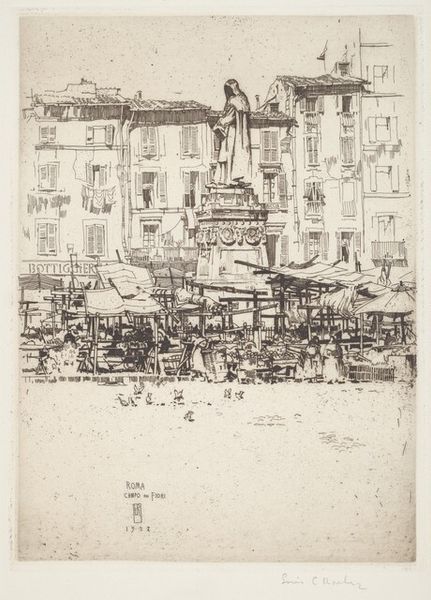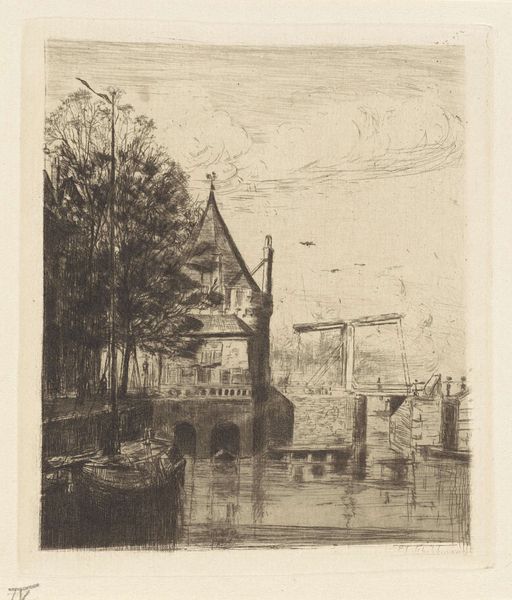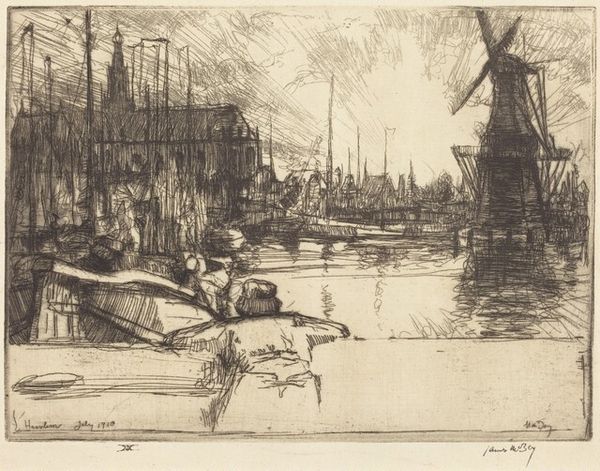
print, etching
# print
#
etching
#
landscape
#
cityscape
#
history-painting
Copyright: National Gallery of Art: CC0 1.0
Curator: James McBey created this etching, titled "Albert," in 1917. What stands out to you? Editor: Immediately, a somber stillness. It feels as though even the air is heavy, laden with dust and sorrow. The monochrome adds to the gravity. Curator: McBey made this piece during World War I. Note the ruin of the Basilica of Albert in France. Knowing the context, how does this shift your reading? Editor: The basilica becomes a symbol, obviously. It's not just stone; it represents shattered faith, broken promises. What were once strong, vertical lines reaching to the heavens are now jagged wounds against the sky. And it towers over the stoic anonymous figures in the foreground. Curator: Precisely. Consider how McBey depicts these figures. They seem almost ghostly, anonymous within the larger trauma. Their lack of distinguishing features is no accident; it speaks to a collective loss, wouldn't you agree? Editor: Absolutely. It evokes images of mourning, yet something is absent – explicit displays of emotion. I find the choice curious because such suppression perhaps hints at resilience too, but there’s no easy heroism here. More endurance than victory. There is no one looking upward, so what are these figures drawn to? The flattened road almost pulls the eye along a path that offers nothing but puddles and an ashy oblivion. Curator: It speaks to the trauma of the "lost generation," stripped of ideals. Think of how deeply the war disrupted class structures. Artists like McBey were often on the front lines witnessing the atrocities and using that knowledge to push an anti-war message through symbolic imagery. Editor: It’s fascinating how the sharp details contrast with the blurry, atmospheric rendering of the figures in the foreground. That play of detail adds depth but also enhances the sense of being out of time. Almost dreamlike. Curator: McBey doesn't shy away from the stark realities of war but also suggests the lingering questions of social values during the interwar years. Editor: Understanding McBey’s skillful manipulation of symbolic elements transforms our perception of “Albert.” I realize how it functions as both historical record and lament. Curator: Right, and how by understanding the larger social and political environment during that period we can recognize a deeper commentary that transcends one event.
Comments
No comments
Be the first to comment and join the conversation on the ultimate creative platform.
